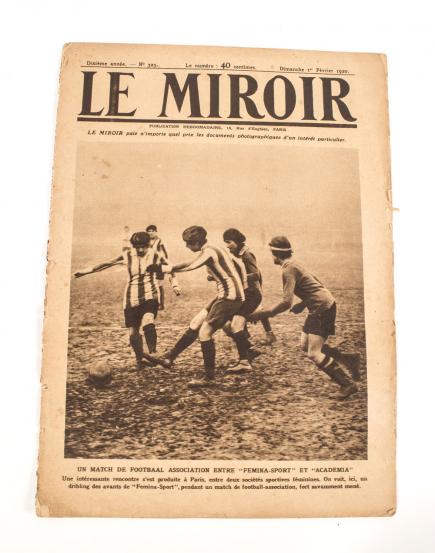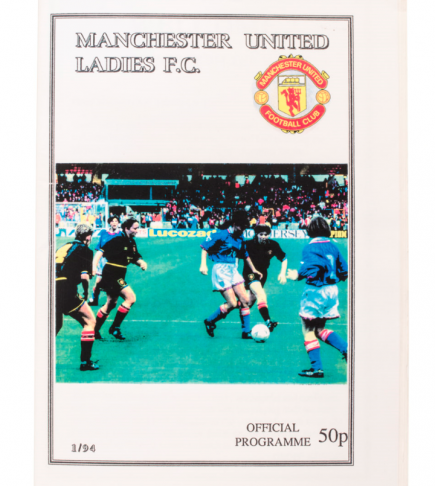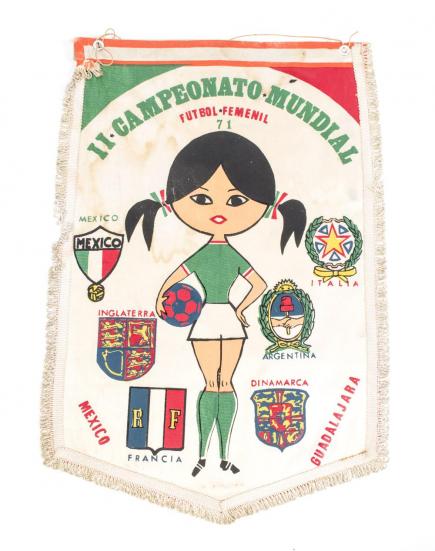There’s a story – unsubstantiated – that a woman may have introduced football to Brazil.
Elizabeth Donohoe’s husband, Thomas, had moved to the South American country in 1893 to work in a textile factory but, struggling to cope without his beloved football, asked his wife to get on the next ship and bring some over.
By the 1890s, football was widespread enough that a woman bringing over as many footballs as she could carry would certainly know what they were for and might have even kicked a few around herself.
Thomas would then set up the first recorded football match in Brazil, and that the founding myth of Brazilian football could be traced back to a woman makes it all the more significant that for so long women in the sport have been overlooked, erased, or shunned.
This is something that the National Football Museum in Manchester is seeking to address, with the help of a 92-box collection of women’s football memorabilia acquired from the late Chris Unger, a former footballer and coach in the United States.

FRONT-PAGE NEWS: An image of women playing football in an organised match from the front of the French newspaper ‘Le Miroir’ in 1920. [photo credit: National Football Museum]
“We’ve tried really hard in the past,” says Belinda Monkhouse, project coordinator at the NFM.
“But because we didn’t have a very large collection of stuff for women’s football we were really quite limited in the stories we could tell.”
The collection spans as early as 1869 and as late as 2014, says Professor Jean Williams from the University of Wolverhampton, who’s also working on the project.
Getting through the 92 boxes – the size of a full small car – has already helped uncover more about the women’s game.
“Because women’s football was banned in England from 1921 to 1971 people didn’t really collect it in the same way that they feel they have to to know the history of men’s football,” said Williams.
“Using the example of Manchester United, you couldn’t know about Manchester United without knowing of its rivalry with City or the history of the Busby Babes. It’s integral to being a football fan, especially a United fan.

HERE COME THE GIRLS: Historians say women’s football has a big part to play in the heritage of clubs like Manchester United, the women’s team seen here in a 1994 programme. [photo credit: NFM]
“The point that we’re trying to make is that women’s football has a history that is just as long and as varied and that fans of the women’s game need to engage with that history, and the collection helps us to do that.”
Over a century of stories can be told from the material, from 19th-century paintings of women playing football to the unofficial World Cup in Mexico in 1971 which saw a sell-out crowd in the final, 110,000 people turning up to watch the hosts fall at the final hurdle against Denmark.

SELL OUT CROWD: 110,000 people saw the 1971 Women’s World Cup final in Mexico [photo credit: NFM]
“We’d also like to look at the impact of the 1921 ban,” Monkhouse says, referring to the period of half a century when women were barred from playing organised matches at FA-affiliated grounds.
“We haven’t got a great deal of material that goes from the 1930s, 40s, and 50s, and that’s sort of telling in itself, that the ban did have an effect, because you just don’t get the same amount of material from that period.
“We do have some stuff from a team in Manchester, the Manchester Corinthians, who still played in the 50s and they had quite a lot of success so we’d like to tell their story a little bit more too.”
But all of these will have to wait until the boxes are all catalogued, a process that the NFM is hoping will be completed by the time Art’s Council funding for the project runs out in September.
“We’ve got lots and lots of ideas it’s just whether or not we can find the funding to make that happen over the next few months,” says Monkhouse.
You can see some of the collection for yourself at the National Football Museum across the Easter weekend, or read more about the NFM’s work uncovering the history of women’s football at https://unlockingthehiddenhistory.wordpress.com/
Image courtesy of National Football Museum via Twitter, with thanks.



